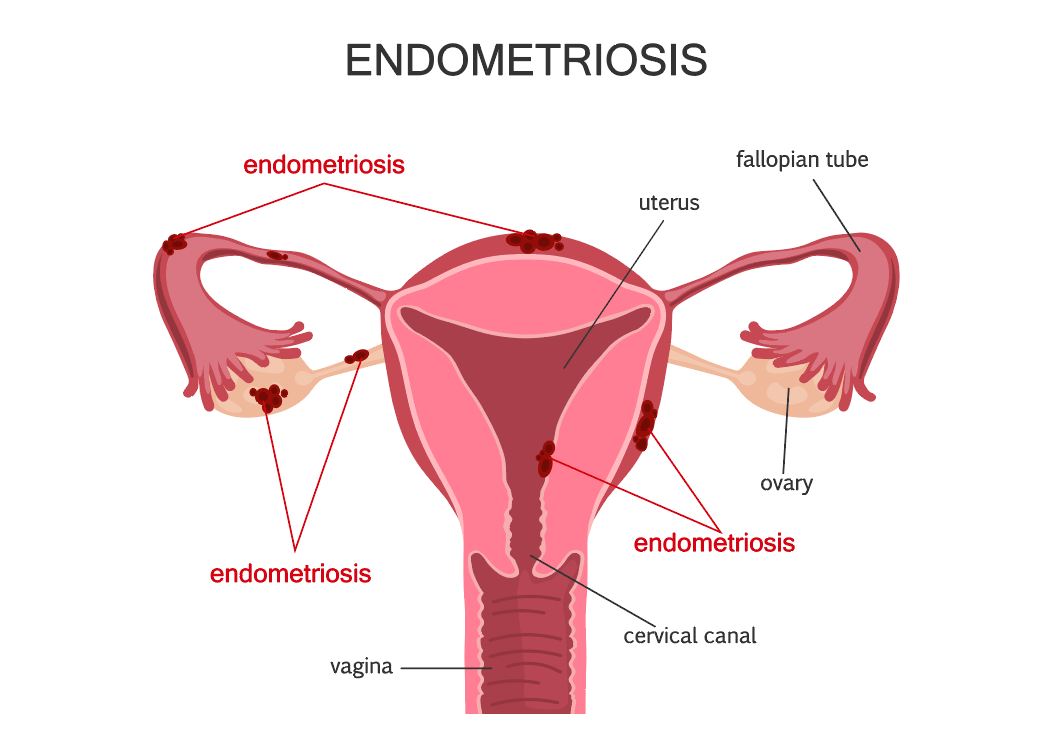Endometriosis
Endometriosis and Pelvic pain are some of the most confusing and poorly managed areas in medicine.
Endometriosis is one of the most misunderstood (and mistreated) diseases in Gynecology and maybe medicine in general. Our surgical treatment method is complete excision that still, even today, is very unusual. There are fewer than 25 Gynecologists in the US that do extensive excisional surgery for endometriosis. There are many studies that demonstrated an increase in fertility after excisional treatment.
Recurrence
Endometriosis is most likely NOT a recurrent disease. We have re-operated on many patients in the last 20 years for other reasons with rare findings of recurrent disease. Most, >99% of gynecologists in the US, use destructive methods at surgery (cautery and laser) in an attempt to “destroy” visible lesions. In most cases, there are numerous lesions present, making this spot treatment very difficult. Microscopic lesions can be missed, and the tissue changes color with cautery and it is impossible to know if the entire lesion has been destroyed, especially for deeper lesions. With excision, the entire area including all the lesions extending out to normal peritoneum is removed. If lesions are deep, we recognize it as we undermine the peritoneum and can completely remove it. We believe a person gets all the endometriosis they are going to have by the mid teens and from there lesions go through their lifecycle and if removed are gone forever. No new disease is forming. What has been observed though by other physicians over time is recurrent pain in patients with endometriosis and when re-operated after a prior cautery procedure, lesions are seen. We see this also in nearly all patients after cautery and laser procedures and there is disease present but it is obvious that some of the disease has been treated before, just not completely. The appropriate word therefore is persistence not recurrence. We therefore feel that excision is curative for endometriosis. Pain could recur but endometriosis would be an unlikely cause of the problem. Hence pain does not equal endometriosis.
Adenomyosis
Endometrial cells located in the muscle wall of the uterus. All patients with endometriosis probably have some degree of adenomyosis. The pain with endometriosis is probably most often characterized as pain with periods in the teen years. As the lesions begin to burn out in the 20’s, many patients report cycles becoming less painful. By the mid 30’s, many patients are again having increased pain with periods. This is most likely due to the slowly progressive problem of adenomyosis. After excision of endometriosis, if pain with periods recurs it is likely adenomyosis. Adenomyosis is not visible at or treated by surgery except through hysterectomy. It is most commonly suspected when the uterus is enlarged on ultrasound. Continuous birth control suppression can slow the progression of this process.

Endometriosis Quiz
Endometriosis is a debilitating condition that affects 10% of women. One of the most devastating consequences of endometriosis is problems with fertility. Endometriosis can make sex very painful and trying to conceive unenjoyable. Take our assessment quiz to see if you may have endometriosis.



